- Working at KSC
- NASA Old Headquarters building on KSC destroyed.
- Flintknapping points
- Vampires of Kennedy Space Center and the O&C
- Demons of Kennedy Space Center
- Demons of Kennedy Space Center, corpus callosotomy
- Ghosts of Kennedy Space Center, End of Spiders
- Dreams of Kennedy Space Center, lovers and pyramids.
- Witches of Kennedy Space Center
- Cave Bears of Kennedy Space Center
- Aliens of Kennedy Space Center, uninvited guests
- Remembering Kennedy Space Center
- Lake 33 Killing Relic
The Ais
Native Americans of Kennedy Space Center and the Indian River Lagoon
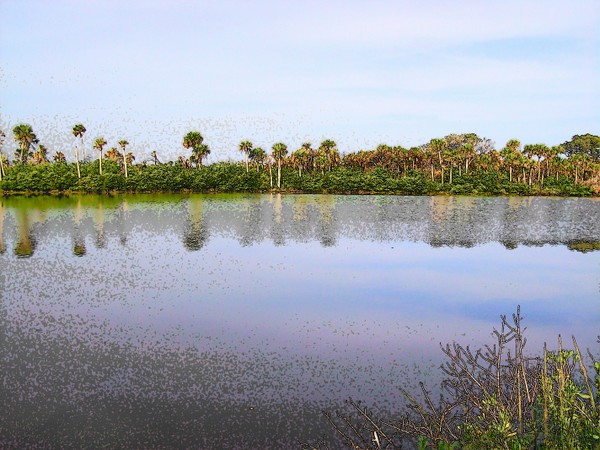
Indian River Lagoon that surrounds three sides of Kennedy Space Center
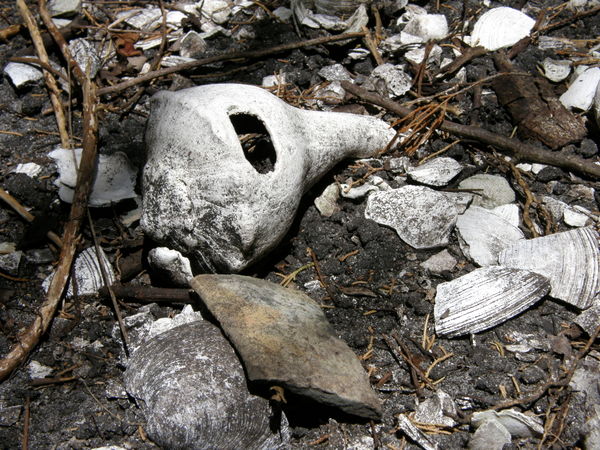
Ais Shell midden (mound) on the Indian River Lagoon:
A stick through a Whelk shell with a hole made the perfect war club - a favorite weapon of Florida natives and one of the more common finds on the Space Coast.
And of course the middens of discarded shells became home sites for early setters and the later launch pads.
The Ais of Kennedy Space Center: Native Americans to be feared.
Wait...who?
Space Center Beach and the Ais (On my YouTube Channel)

Ais Indian artifacts & the launch pads built upon their mounds
Why had I never of the Ais Indians before I was stationed to the cape in the United States Air Force?
I suspect because American history often begins at Jamestown or the settlements of New England & disdains the prolific writings of the Spanish and their vast Empire of the new world.
When the English gained possession of the Florida, they changed the name of the Ais Lagoon to the "Indian River Lagoon".
As to Florida native Americans? The English and Americans chose focus upon the new immigrants to Florida: the cattle rich confederation of Creek and Seminole peoples.
However Florida history is older than Andrew Jackson.
In the age of discovery the Soldiers and sailors of the Spanish kingdoms were honed to a fighting spirit and martial culture to break the yoke of 800 years of Moorish dominance.
These Iberians considered the best soldiers and sailors on the planet were scourge of the Americas-horse and steel, gunpowder and war dog, the Spanish tercio-the piss your pantaloons fighting square. Modern technology backed by fearless men equaled an unstoppable war machine.
As one by one the new world cultures, cities and tribes fell before the onslaught of diseases and ferocity of the Iberians; very few Native American cultures were able to resist extinction or absorption, slavery and the lash of Christianity.
A few examples of the cultures that managed to resist on the fringes of the expanding Spanish empire:
The Apache residing on the fringe of empire survived through the sheer toughness of a people hardened by the harsh climate of the desert southwest. (please forgive that I am not using correct names)
The natives of Panama who tipped arrows and darts with the poison from colorful tree frogs. Weapons so deadly that even the bravest of Spaniards could not defeat them.
The Caribs: The Caribbean Sea was named for this fierce people. Practitioners of mobile warfare in their ocean going sea canoes; masters of the surprise attack and raid -The Carib people of the islands resisted the might of Spain for three hundred years only to be eventually absorbed into island populations of run away African slaves.
The Ais Indians of east Central Florida:
The estuary we know today as the Indian River Lagoon was for two hundred years recorded on Spanish maps as the "Rio de Ais" and to be cast ashore shipwrecked on the Canaveral Cape was a sentence of death -for the very survival of the Ais people was at stake.
Pronounced "Eeece" or "Ays" the Ais people who lived on what was to become Kennedy Space Center had been hardened by the pressure of powerful enemies long before the arrival of the Spanish with their steel and guns.
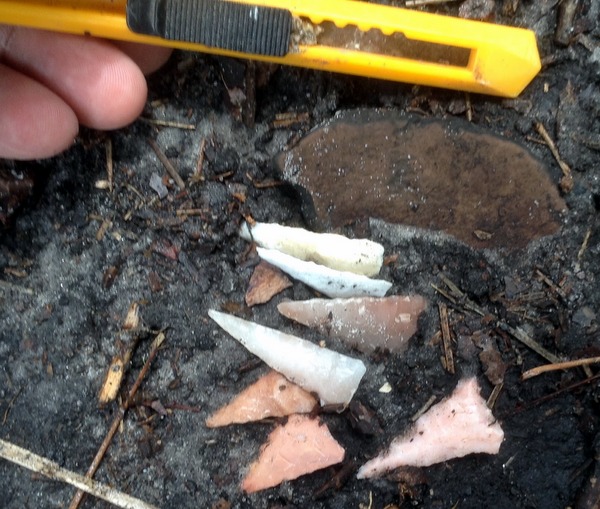
Ais Indian arrow points found along the Indian River Lagoon
The Ais were a relatively small group of people living on the east coast of Florida. Their language had no known relationships to other south eastern language groups and the Ais are the probable descendants of the Windover burial pond culture of Titusville. (Brief description of the Windover site on my History of the Indian River Lagoon page)
The Ais were surrounded on two sides by powerful Native American superpowers-enemies who sought to subjugate them. Consequently the arrival of the Iberians was the least of their concerns.
To the north of the Rio de Ais were the powerful Timucua: Fourteen powerful tribal groups that controlled portions of southeast Georgia, north and central Florida. The Timucua renowned as powerful archers had suffered greatly facing the brunt of the invading army of Hernando de Soto- however that is another story.
National Geographic newest discovery of De Soto's march into Georgia
And of course My story of De Soto "Freedom's Quest"
To the south of the Ais was the super power of the Calusa federation. Absolute rulers of south Florida.
National Geographic story of a giant Calusa structure recently discovered by archaeologists
Of interest is that the Calusa language had some similarities to the dialects of Taino and Arawak Native American groups of the Caribbean Islands, however this may represent island refugees fleeing from slave deprivations of the encroaching empire of Spain. (There are records of entire villages fleeing to Florida)
Consequently the small tribal groups of Ais living upon the Rio de Ais were squeezed between the vice of two super powers. With the Atlantic Ocean to their east and vast wetlands to west-retreat was often not an option.
Faced with overwhelming odds cultures must capitulate or resist with all their might. A resistance that requires the mental fortitude and toughness that today is best represented by the culture of the American southwest known as the Apache.
On the east coast of Florida the equivalent of the Apache were the Ais Indians who resisted Spanish colonization and conversion to Christianity for nearly two hundred years.
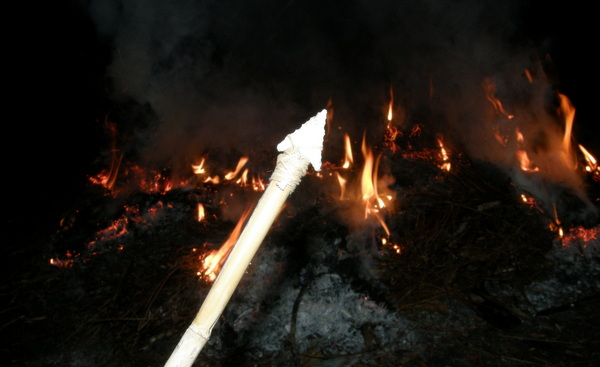
To be cast ashore on the coast of Ais Florida meant certain death
Of note: the Caribs and Ais were to resist the might of Spain for twenty generations or more!
"Laguna de Ays" and "Barr de Ais" (the reefs of Cape Canaveral) were words of terror to all Spanish sailors and passengers of the vaulted Spanish galleons-words that caused no less fear than the raiding Caribs of the Lesser Antilles.
For most of the period of the Spanish empire of the new world; to be cast ashore on the east coast of Florida meant slavery or death.
During a brief lull in hostilities between the Ais and Spain One 1605 expedition successfully mapped the Province of the Ais & recorded much of what we know today about these inhabitants of east Florida.
(Unabashed promotion)
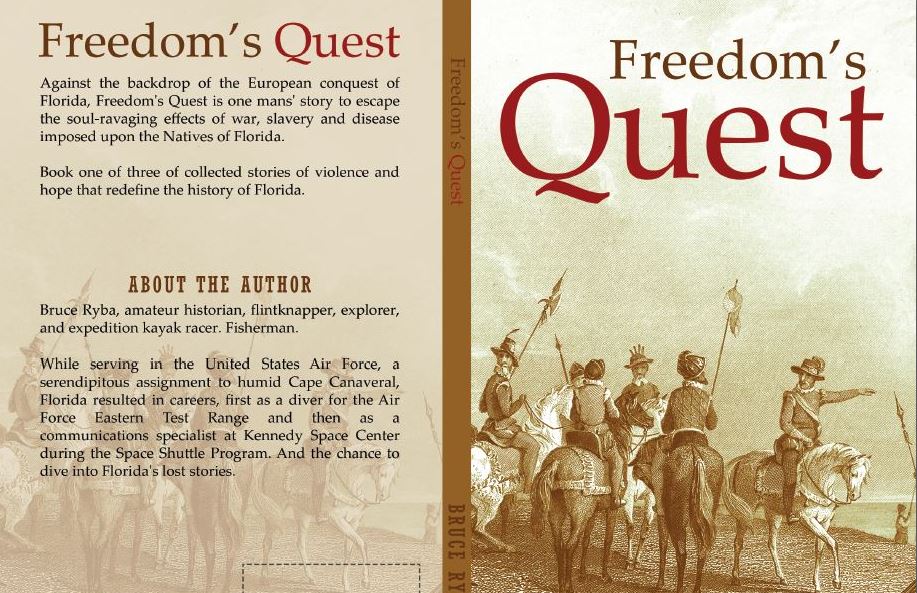
Freedom's Quest (link to story synopsis) is book one of my fictional account of the Ais at the village of Ulumay. (Ulumay is just south of Kennedy Space Center)
Freedom's Quest customer review and my talk on my You Tube channel about the sequel "End of Empire"
Amazon link to Book One of FREEDOM'S QUEST trilogy.
Please be so kind to just click on the Amazon page. Their little robots will elevate the book's prominence if folks just look!
A review would be great also, however I am not pushy and we are all busy in these times.
The link is for the paperback book --and I am trying to add the Kindle link.
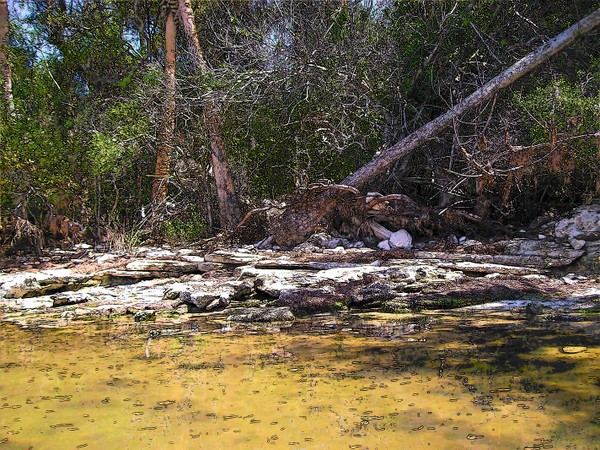
Ship wrecked on the wild Ais Coast was almost certain death
Why did the efforts of missionaries and the military fail to pacify the Ais? Reasons are varied: The environment. The Mosquito (east) coast of Florida was often a death sentence for Europeans who attempted to settle Florida .
Mostly however, things got off to a bad start:
The European (Spanish) exploration of the Florida and Georgia coast was similar to the Spanish discovery of the Bahamas - Islands to be exploited and the inhabitants captured as slaves to be worked to death on Hispaniola.
As early as 1500: Ships sailed from Cuba and Puerto Rico with the sole intention of enslaving anyone found on the Florida coast. For well known reasons these slave hunters chose to avoid the powerful Calusa or Timucua areas and so the Spanish deprivations fell upon the weaker peoples of the coast: The Jeaga, the Tequesta, the Guale and attempts to capture the Ais of the Indian River Lagoon.
Consequently almost the very first contact with Europeans was an act of aggression upon the Ais people.
However where other native Americans fell prey to the tricks of the slave hunters; the hard pressed Ais only saw the Christian slavers from the grey Atlantic as the enemy and vindication of their world view that they were a surrounded people whose task was war for survival.
The period of the early slave hunters lasted nearly Seventy years until the French settlement near modern day Jacksonville. The French seeking a foothold in the new world forced the Spanish empire to reconsider the savage Florida coast.
A Huguenot settlement threatened not only Spain's treasure ships but also the French interlopers were Protestant heretics and that threatened the very souls of Spanish subjects (as Spain considered all of the natives of central and North America to be subjects of her Catholic majesties. No matter the consideration of the native Americans)
1565:
The European war of reformation comes to Florida: Competing armies landed in the Timucua areas of north east Florida to fight for the heart and soul of Florida.
Treaties were made with the competing nations of the Timucua people however nature sealed the fate of the Huguenots when a hurricane wrecked the French fleet casting the soldiers on remote beaches and allowing the smaller Spanish army to defeat the destitute Frenchmen.
Very few of the French soldiers and sailors were spared the sword or noose- a sign on the hanging tree proclaimed "They were executed as heretics not as Frenchmen"
The murder of the French army that had surrendered in desperation provoked future reprisals by the French into Spanish Florida.
A small remnant of the Huguenot army -those that had refused to surrender fled south into the Ais lands of Cape Canaveral to rebuild their hurricane wrecked fleet and escape the murderous attention of the victorious Spanish.
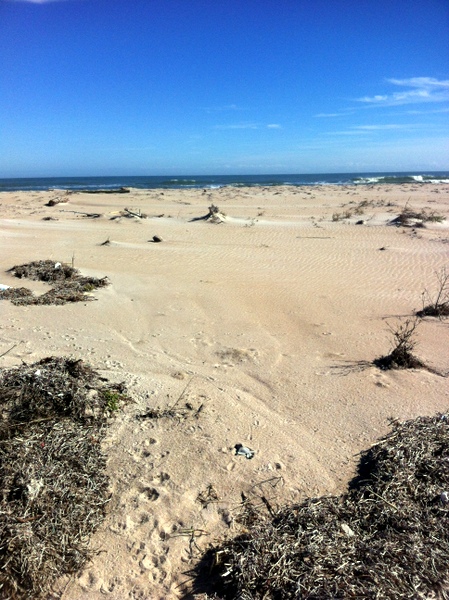
Beach near the Jean Ribault archeological site on Kennedy Space Center. Imagine racing to repair your hurricane damaged ships while the Ais and Spanish marched at you from two directions.
French armor found near the Wildlife Visitor Center. A talk on my You Tube channel.
And the northern space center mounds
Today the archeological site known as the "Jean Rebault site" lies almost due east of Launch Pad 39B on Kennedy Space Center.
Pad 39B saw Apollo and space shuttle launches and is the planned launching site of NASA's future SLS rocket- the most powerful rocket ever developed.
Beach location near the French fort (my You tube channel)
However in the distant past on the barren coast of the Ais, a group of Frenchmen raced to cobble together a usable shop from two wrecked ships. To their north the victorious Spanish army marched towards the cape while the Ais distrustful, debated what to do about the shipwrecked Frenchmen.
Other castaways had washed up on the Lagoon of the Ais and had been dealt with by fire and arrow.
For the Ais this not was their first experience with gunpowder-and there were the legends of Hernando de Soto excursions upon the Timucua enemy; however this was certainly the first experience for the Ais with a large group of soldiers armed with cannon and matchlocks. Like other people around the globe the explosion, fire and smoke of gun powder represented a magical control of lighting.
And hesitation enough for the French to complete ship repairs and escape Cape Canaveral before either the arrival of the Spanish or the anger of the Ais.
****Note: the updated information put out by the Park Service now states all the French Surrendered at Cape Canaveral. So now I know of two versions of that history!
An item found in dunes near Launch Pad 39B
Spanish Florida
To the victor goes the spoils and so kingdom of Spain remained the sole European occupier of Florida for 235 years.
The Spanish tread lightly on the nations of the Timucua establishing treaties and missions with the powerful bowmen of north east Florida.
However as all bullies are wont to do; the people of the Rio de Ais were not provided the same respect as their powerful neighbors.
After a minor dispute north of Cape Canaveral the Spanish sent a punitive expedition against the village that today is known as Seminole Rest archeological site on the shore of Mosquito Lagoon; Oak Hill Florida. The punitive expedition put sixty people to the sword in retaliation of the murder of some Spanish soldiers. --Personal note: I actually believe the executions took place further south at the midden/village I describe on my page "A Mysterious Hand cast" However the Seminole Rest mound was a larger village so I defaulted to that native American town.
The Spanish always concerned about the care of their subjects probably punished the correct tribal group-unlike future attacks on native Americans by both English and Americans -where the attack was really genocide with little concern if the particular group of native Americans were actually the guilty or correct tribe to attack.
Unfortunately for the Spanish missionaries and future attempts to tame the wild Ais. The punitive expedition only highlighted the need to resist.
One-hundred and fifty years of resistance
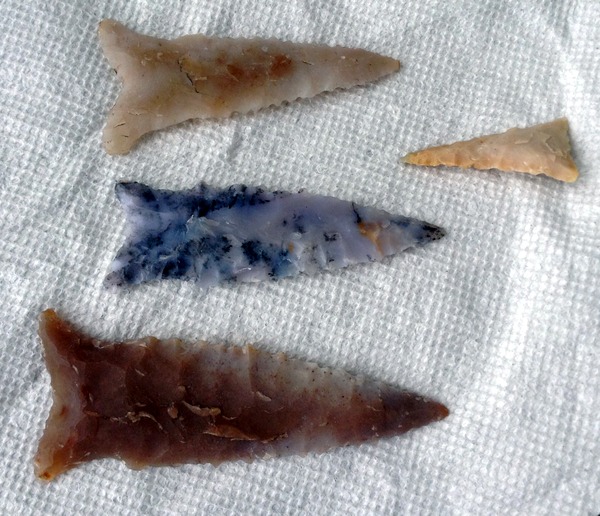
Weapons of the Indian River Lagoon
Future punitive expeditions by Spain, trade or conversion attempts by Franciscans ended in failure or death for both soldier and priests--for the Ais were not to be mollified.
Treasure ships continued to wreck upon the Barr de Ais with the treasure collected by the Ais as curiosities andthe shipwrecked put to the knife or fire.
Spanish Gold found on Banana Creek
The Ais resisted colonization and Christianity attempts and thrived on their brackish lagoon. Recovered treasure was placed in the local burial mounds as an oddity with little value. Gold wrapped bird wing flutes being one of the more common burial items discovered on Kennedy Space Center-the flute being the most valuable item.
Many gold items were discovered when destroying the shell middens and mounds of Cape Canaveral to fill in the swamp land under Launch Pads 39A & 39B.
The three north Indian mound/midden/settlements of KSC & why they were in this location (Fishing!) on my You Tube Channel

Bone I found along the Mosquito Lagoon while fishing (I placed the bone back in the water and sent the photo to the east coast FPAN) "Deer" was the response
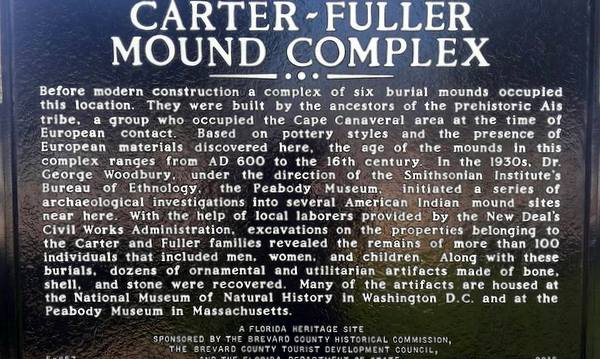
Historical marker in Cape Canaveral Florida, marking an Ais Indian Burial mound complex raided by the Smithsonian.
Gold in them hills....
In 1933 & 1946 the Smithsonian institute initiated archeology digs in Brevard County only to find silver from Spanish treasure wrecks in nearly every mound in Brevard.
A fascinating book that detailed the Smithsonian findings can be checked out from the Brevard County central library.
Of note was the missing item: Gold. Plenty of silver artefacts were discovered. I suspect the gold was pocketed by the hired help-- because gold was found in the mounds of Kennedy Space Center during the space race.
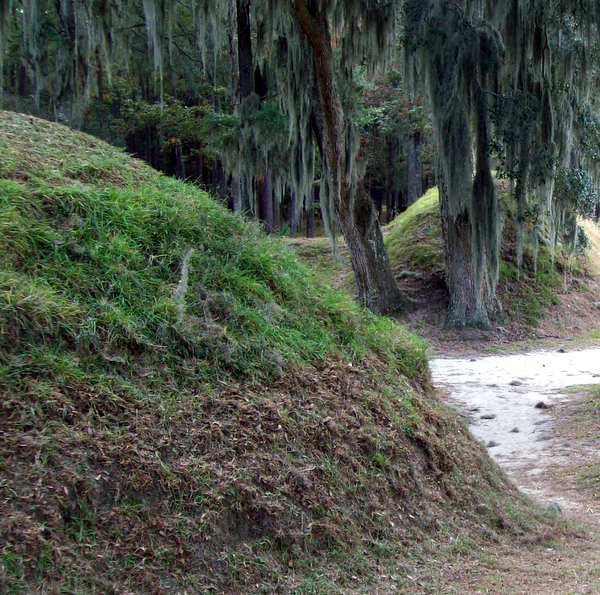
Silver from Spanish treasure ships found in almost every mound. Where was the Gold? I maintain it was pocketed by the locals hired to dig for the scientists.
A talk about Futch Cove on my You Tube channel
Photos of treasure from the State of Florida collection
Two hundred years of resistance
While the Ais fiercely resisted efforts to tame them (bring them under the sway of church and King via Christianity) the Native American super powers to the north and south accepted both Christ and King and the restrictions and disease that came with both.
Within fifty years of the establishment of Franciscan missions both the Calusa and the Timucua federations had lost half of their population to European disease. Epidemics raged almost non stop and within another half century nearly 90 percent of the population of these powerful nations were lost to disease.
The Franciscans recorded every epidemic, noted with despair the shrinking populations and forced native towns to relocate closer to St. Augustine where the people were further exposed to epidemics.

Ais Indian knives and tools for cleaning fish
Meanwhile the Ais refusing all attempts at peace offerings thrived on the endless resources of the Indian River Lagoon.
Over the nearly two hundred years of hostility to crown and church the Ais took in runaway Timucua and Calusa-people whom the Spanish called Seminoli (runaways).
Thru the experience of these runway Christian Indians who also acted as trade emissaries for the tons of gold and silver that had washed ashore in the province of the Ais.
The Ais gradually softened their stance on outsiders (the powerful chiefdoms of the Calusa and Timucua archers now only myths) and the fierce Ais eventually signed a truce with Spain via the governor of St. Augustine.
Only a few years after signing the treaty and agreement to spare castaways, was the Quaker Jonathon Dickinson wrecked upon the Ais shoreline; and although greatly terrorized, Dickinson and his party were marched and canoed to St. Augustine.
Much of what is known about Ais culture comes from the writings of Jonathon Dickinson.
Sadly like other Native American cultures, the truce only exposed the Ais to the same epidemics that that devastated their ancient enemies.
Carolina Raids
By 1700, slave raiders-native Americans paid by the English to harvest slaves (other native Americans) from across the eastern seaboard were hired to turn their slave raiding attentions on Spanish Florida
They were hired to raid Florida for two specific reasons: First the king of Spain had issued a Cedula (proclamation) that all African slaves (owned by the English) would be freed if: they escaped to Florida to serve with the St. Augustine Militia and swore alliance to the crown of Spain.
To the Carolina subjects of the British crown that route of freedom for their expensive African slaves had to be seared shut.
The other reason for the Florida raids: Native American slaves from the gulf area becoming more difficult to harvest.
The slave based plantations of the Caribbean had an insatiable need for slave labor.
As the easily captured Native Americans of the southeast became scarce and the French began arming the Chickasaws to the west; attention turned towards the Christian Indians around the Spanish missions of Florida and the plentiful villages of the Ais Lagoon.
To make the situation a potential disaster was the fact that the English traded in musket and powder, arming their native allies with modern weapons while the Spanish offered salvation by conversion but prohibited the trade in firearms.
My talk of the Invasions on my You tube Channel

Ais blade found on the Space Coast.
The Ais and other Florida Indians were armed with bone and flint weapons, while the invading Indians from the north possessed gunpowder and muskets.
And so around the year 1702 began the Carolina raids into Florida which nearly depopulated the Indians of the peninsula. For the Ais of the Indian River Lagoon and Cape Canaveral now loyal subjects to the Spanish crown and possessing no muskets or powder -there was but one choice: flee south along the old lagoon.
Canoes were a way of life for the Ais people and they escaped towards the St. Lucie inlet and returned once the Carolina Indians had retreated north with their new captives.
For the Indians of the Spanish missions there was no escape and they disappeared into history by way of the slave plantations of the Caribbean.
The slave raids continued into Florida often forcing people to the Florida Keys. Records exist of Spanish merchant ships rescuing wretched groups of Calusa, Tequesta and Tobago from the keys.
For the Ais, with each raid they ventured less north to their ancient homeland and their new capital was established away from Cape Canaveral and to the present day area of Sebastian Inlet.
End of the slave raids into Spanish Florida
The era of raiding Spanish Florida and the border lands south and west of the Carolinas came to an end as easier to obtain slaves from Africa replaced difficult to replace Native American slaves.
However it could be said, that except for the Ais on the lower lagoon, the remnant Timucua at St. Augustine, some Seminoli Indians practiced in the art of hiding from the Spanish and the Calusa holed up in the Everglades: The Florida Indians were gone. Used up.
Some Florida Indians did return. Spanish records indicate some Apalachee returned to Florida with their Yamasee captors, after the Yamasee war of 1715–1717
Of note: the slave raids into Spanish Florida demonstrated to the Native Americans of the south east, that Florida was a fertile and near empty land. Feral Spanish cattle thrived in abundance and various clans and tribal groups of the south east began their generations long migration into Spanish Florida.
The Ais return
The Ais slowly filtered back up the Ais lagoon with small settlements returning to Cape Canaveral and Ulumay (Merritt Island) and mixing blood with runaway African slaves and the seminoli Indians who had fled both the Spanish yoke and the slave raids of the Carolina Indians.
A new culture in the making birthed from fire of the Spanish attempts to create a Catholic Florida.
The era is the Spanish missions system was forever ended in Florida. And the Spanish crown quit the royal policy of restricting fire arms to their (surviving) Native American subjects -creating a three way power struggle between France, Great Britain and Spain of who could purchase the allegiance of the native Americans of eastern North America.
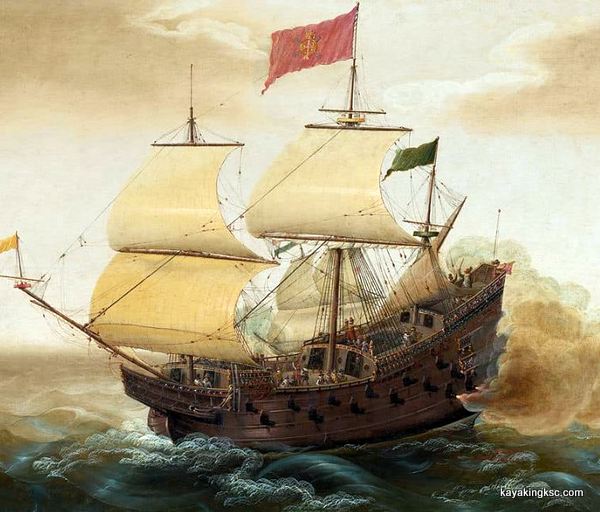
The Plate fleet disaster
In 1715 the largest treasure armada in history sailed from Cuba for Spain at the height of hurricane season. (Poor decision by a king strapped for cash?) Just offshore of east Florida a massive hurricane struck this armada known as the Plate fleet. The hurricane drove the heavy laden ships onto the reefs of the Florida east coast spread out for nearly the length of the Indian River Lagoon and at daylight on the morning after the disaster nearly 1100 survivors; citizens of the Spanish empire stood upon the barren beaches of hurricane ravaged Florida.
Treasure recovery efforts were organized at the "The Big Town of Ais" near present day Sebastian Inlet.
The Ais played a major role in recovery of the treasure by serving as salvage divers and the gold and silver plate was quickly stacked in front of the Ais town in ever growing heaps.
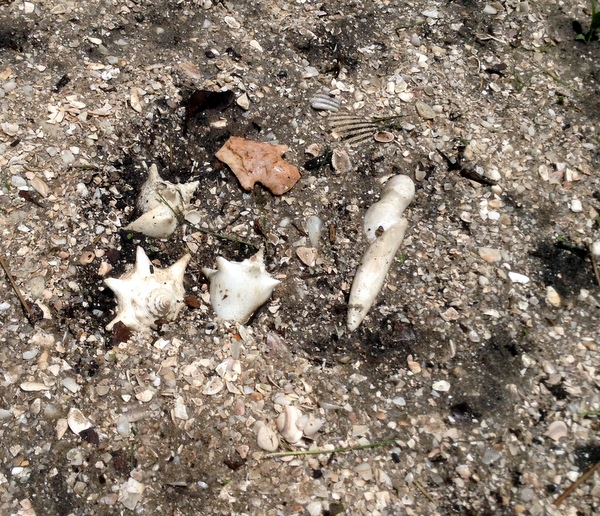
Artifacts found while cleaning up a beach homeless camp in South Brevard County
Photos of treasure from the State of Florida collection
Treasure ship off the coast of Kennedy Space Center? Chester Shoals House of Refuge
The Ais once the bane of any castaway helped to prevent a humanitarian disaster by providing fish for the 1100 desperate survivors from the bountiful Ais Lagoon.
An English Territory
The next sixty years saw new native Americans powers arise in Florida as the Spanish invited former Native American enemies to migrate to Florida as a buffer to the growing English colonies.
The 1740's saw two British attempts to capture the powerful star fortress at St. Augustine-the attempts failed however the invasions reminiscent of earlier invasions caused further migrations into the river lands of the Laguna de Ais and Timucua refugees added their blood to the new Ais fishing culture.
In 1763 Spain lost Florida to Great Britain by treaty. Many of the surviving Ais and Timucua moved to Cuba with the Spanish settlers and ranchers of old Florida.
Records exist of priests in Cuba requesting additional subsistence payments to the impoverished Ais of Cuba. (This was last official Spanish record of the Ais as a separate people)
For the Ais who remained to fish the Ais River little changed except the incoming English did not recognize any specific Native American tribal identity for the mixed race fishermen who lived upon the Indian River Lagoon.
The remnants of the Ais tribal units were fisherman who traded freely with the Cubans and so they were generally called "Spanish Indians" as opposed to the cattle based new Florida Indians like the Yamasee, Seminole and Creek confederations.

Seminole Indian costume reproduction at Fort Christmas Florida. For the Ais Indians, the Seminoles were northern invaders--enemies.
The Lagoon gets a new name
Consequently the 150 mile long lagoon was christened the "Indian River" of east Florida. The name Ais almost disappearing from any English based history. The fierce Jeega and Ais Indians written about by the castaway Jonathan Dickinson were gone, transformed into peaceful fishing clans.
During the brief English period of Florida, two English plantations were attempted near the newly named Indian River, one a few miles from Cape Canaveral on the Shiloh ridge using African slave labor and another plantation north of the cape at New Smyrna using indentured servants from areas of the Mediterranean.
Turnbull Creek on the Indian River gets it's name from the Turnbull plantation at New Smyrna north of Cape Canaveral. Patillo Creek was used to ferry supplies to the Shiloh ridge. Both plantations eventually failed however refugees from these plantations added new blood to the Ais people-African slaves and indentured servants from the Mediterranean island of Minorca.
Early in the New Smyrna the experiment, Andrew Turnbull penned letters of complaints about his Italians absconding to the game-rich Indian River.
Spain enters the war
During the American war of independence from Great Britain; Spain entered the conflict on the American side with Gálvez capturing the English fortress at Pensacola.
At the end of the conflict, per treaty Florida was ceded back to Spain with assurances that British subjects could retain their property rights.
With the return of Spanish rule to Florida, Calusa returned to their ancient lands in south Florida and as well did the Ais from Cuba many of whom had married into families of Spanish-Cubans or other native Americans who had fled Protestant English Florida.
The lure of endless fish from the Indian River Lagoon was a better option than the squalid ghettos of Cuba and the retuning Cuban-Ais mingled with the families of Greeks, Italians and Minorcans from the Turnbull plantation who now occupied the old oyster-shell middens of the empty Ais towns.

Americans were the late comers to the IRL
The Americans
By the time of the sale of Florida to the Americans and the Seminole wars; the fishermen of the Indian River retained only vague stories of their Ais grandparents & taking little or no interest in the American war of relocation waged upon the new native Americans of Florida. -Perhaps even recalling that 130 years earlier the various tribes and clans that the English called "Creek Indians" were the same enemy that had raided Spanish Florida and had marched so many native Floridians north to be sold at Charles Town.
The Space Race:
Final note: The Ais connection and the moon landings. With the federal government confiscation of large sections of Cape Canaveral and Merritt Island; construction was begun on two giant launch pads for the Apollo program.
Launch Pads 39A & 39B were constructed adjacent to the Atlantic Ocean in the Ais heartland.
To fill in the miles of swampland for this monumental project, 5000 years of Ais oyster shell middens were bulldozed into wetlands and swamps along with fill dredged from the bottom of the Ais Lagoon.
Man's first steps on the moon were literally launched from the shell middens of the fierce Ais native Americans.

Photo credit: NASA

Launch pads for the Apollo, Space Shuttle, Ares, SpaceX and the SLS programs were constructed on Ais midden debris
Photo credit: NASA

Return Home from the Ais, Native Americans of Kennedy Space Center
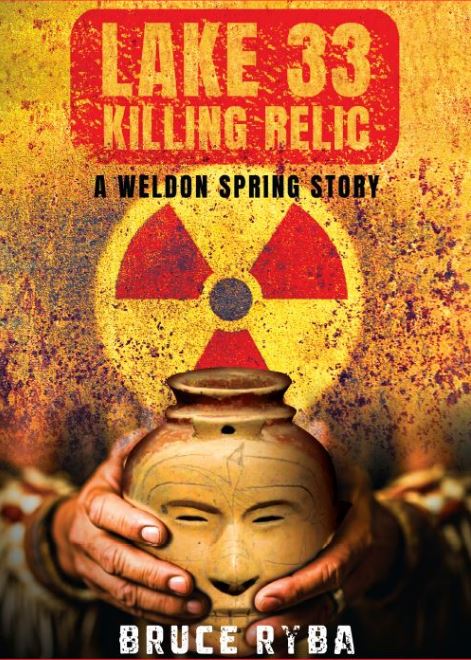
My newest book, available on Amazon
(paperback and e-book)
For pet lovers around the globe, "It's a Matter of Luck" is a collection of heart warming stories of horse rescues from the slaughterhouse.
Available on Amazon
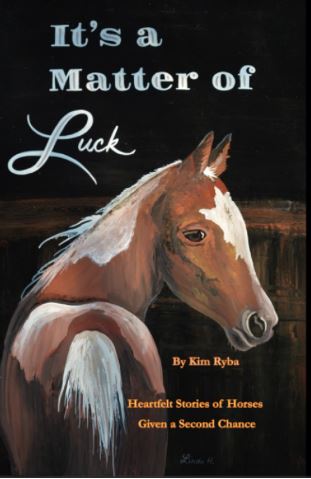
It's a Matter of Luck: Inspirational, Heartfelt Stories of Horses Given a Second Chance.
by Kim Ryba & Lina T. Lindgren
Warning: This book may cause your eyes to water in a good way. (speaking from experience after reading it)
Please give Kim and Lina a heartfelt review on Amazon!

Author Bruce Ryba at Kennedy Space Center Launch Pad 39B & Artemis 1. "We are going to the Moon!"
Author's discussion (that's me) on You Tube of a book review on Amazon
For the video versions of information, please check out my YouTube Channel (Turkeys, Flintknapping, dive stories etc.)
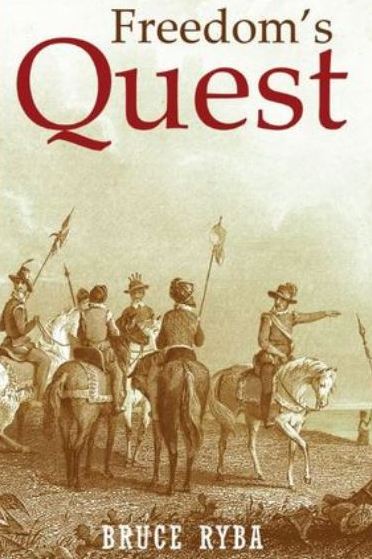
My fictional series/stories on Florida history:
Freedoms Quest (book one)
Struggle for the northern frontier and other lost tales of old Florida.
Available on Amazon
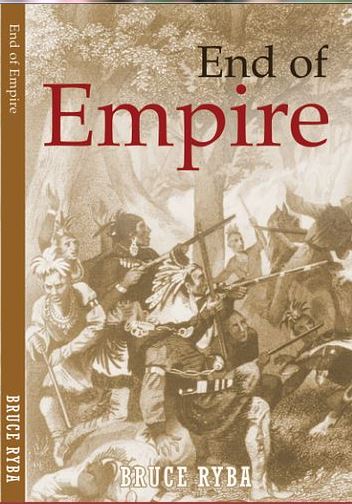
Desperate times call for bold action.
In a desperate move to retain Florida and protect the treasure-laden galleons on their dangerous return journey to Europe, the King of Spain issues a royal decree offering refuge to all English slaves who escape Florida and pick up a musket to defend the coquina walls of Saint Augustine.
In another bold gamble, the King offers refuge to the dissatisfied Indian nations of the southeast who will take up arms against the English.
Clans, traumatized by war and disease, cross the Spanish Frontier to settle the cattle-rich land and burned missions of Florida.
Follow the descendants of the conquistador Louis Castillo in remote Spanish Florida, a wild and swept by diseases, hurricanes, and northern invasions.
Book Two: Available on Amazon!